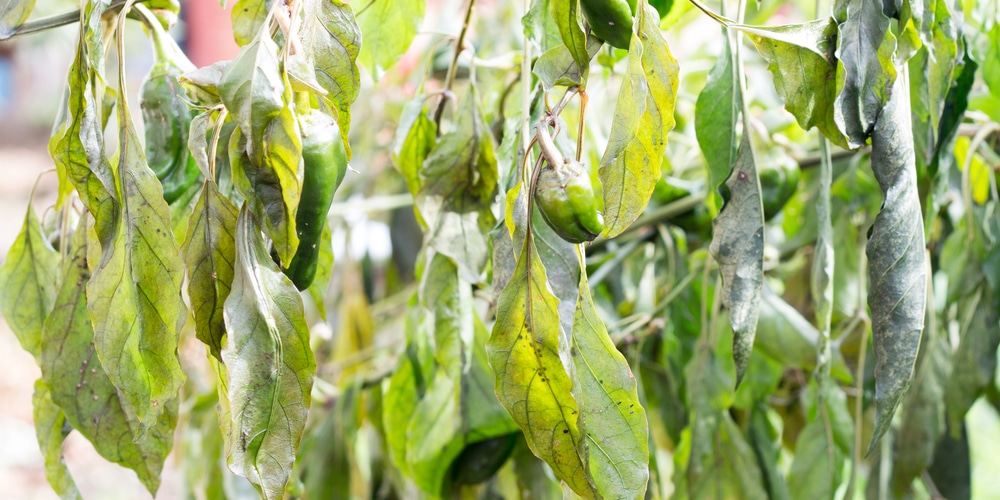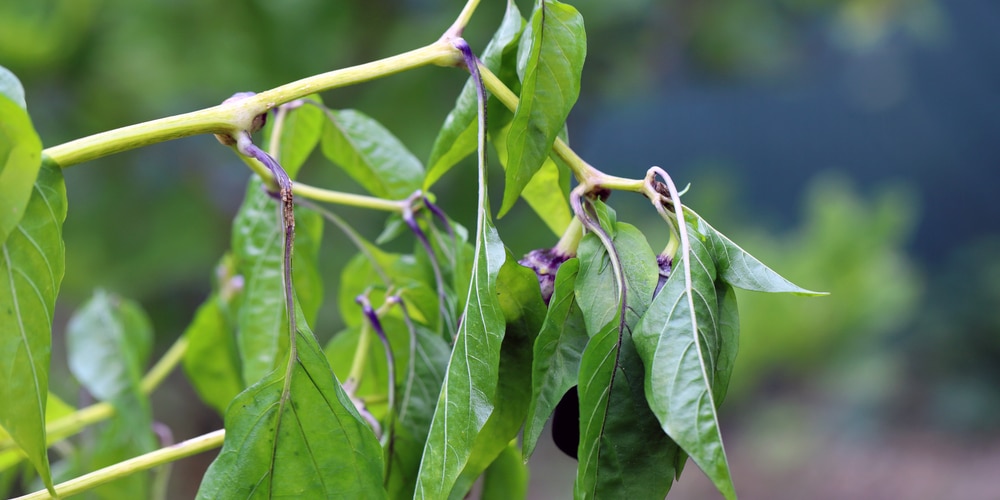Bell peppers have a reputation as a warm-weather crop. They’re often one of the last vegetables to be planted in the spring, and they don’t tolerate frost well. With the coming of fall, gardeners start to worry about their bell peppers. Considering how late they are planted, it’s no wonder that frost is a concern.
Don’t worry – if you have a few bell peppers that are still hanging on as frost approaches, there are a few things you can do to help them survive.
How Can Frost Damage Bell Peppers?

Frost can damage bell peppers in two ways. First, the cold temperatures can damage the plants themselves. This is especially true for young or tender plants.
Second, frost can damage the peppers that are already on the plant. These peppers may not be edible after being exposed to frost.
What Temperature is Too Cold for Bell Peppers?
In general, most bell peppers can tolerate temperatures down to about 32°F, which is typically the point at which frost occurs. However, they will be damaged by temperatures much lower than this. If the temperatures dip below 28°F, the plants will be killed.
It has been found that once the temperatures outside have reached 55°F, the growth of the bell peppers will stop. As a result, the flavors of the peppers will be affected as well. If these mature bell pepper plants have seedlings, they might not even germinate at all if the temperature outside is too cold.
Considering all of these things, it’s clear that bell peppers don’t do well in cold weather. If you live in an area where frost is a concern, there are a few things you can do to help your bell peppers survive.
What Can You Do to Protect Your Bell Peppers From Frost?
As winter approaches, many gardeners begin to worry about frost damage to their plants. Frost can cause the leaves of bell peppers to turn brown and mushy, making them inedible.
Frost doesn’t just make the plants inedible, but it also causes some of the plants to stop growing overall. This might mean that your bell peppers may not produce as many fruits as they would have if there was no frost.
There are a few things you can do to help your bell peppers survive the frost:
Choose the Right Variety
One of the most important things you can do to protect your bell peppers from frost is to choose a suitable variety. Some varieties are more resistant to cold weather than others, so it’s important to do your research before planting. Depending on which USDA zone you live in, there are different varieties that will do well.
For example, if you live in USDA zone 6, some of the best varieties include ‘Early Calwonder,’ ‘Big Bertha,’ and ‘Tasty Green.’ These varieties can all tolerate temperatures as low as 32°F.
If you live in a colder climate, such as USDA zone 5, you’ll need to choose a variety that can tolerate even lower temperatures. Some of the best varieties for this climate include ‘Burpee Hybrid,’ ‘Early Jersey Wakefield,’ and ‘Golden Bell.’ These varieties can all tolerate temperatures down to 28°F.
Plant Your Peppers Early
Another way to protect your bell peppers from frost is to plant them early. This gives the plants a chance to establish themselves before the cold weather sets in. Doing so will also help the plants produce more peppers.
If you live in an area with a short growing season, it’s important to start your bell peppers indoors. This will give them a head start on the growing season. You can then transplant them into the garden when the weather warms up.
Use Frost Cloth
Frost cloth is a type of fabric that helps protect plants from frost. It’s made from a variety of materials, including polyester and cotton. Frost cloth works by reflecting the sun’s rays back onto the plants. This keeps the plants warm, even when the temperatures outside are cold.
You can buy frost cloth at most gardening stores. Be sure to choose a fabric that’s light-colored, as dark colors will absorb the sun’s rays.
Cover Your Plants
If you don’t have frost cloth, you can use other materials to cover your plants. Some gardeners use sheets, blankets, or even straw to protect their plants from frost. Just be sure to remove the coverings during the day so the plants can get some sunlight.
Water Your Plants
It’s important to water your bell peppers regularly, even in the winter. This will help the plants stay hydrated and prevent them from wilting. Be sure to avoid overwatering, as this can cause the roots to rot.
Apply Mulch
Mulch is a type of material that’s used to cover the ground around plants. It helps protect the plants from extreme temperatures and keeps the roots cool. Mulch also helps retain moisture, so your plants will need less water. You can buy mulch at most gardening stores. Be sure to choose an organic mulch, such as bark or wood chips. Some of these can also be found in your yard.
Move Your Plants Indoors
If the temperatures in your area are too cold for bell peppers, you can move them indoors. This is especially important if harsh winters are common in your area. Be sure to choose a sunny spot in your home, such as near a south-facing window. You can also use grow lights to provide the plants with additional light.
Your bell peppers will need some time to adjust to their new environment. Be sure to keep an eye on them and water them regularly. You may also need to fertilize them more often. Additionally, bear in mind that belle peppers ned at least 18 inches of space in all directions, so you may need to move them into a larger pot.
Can bell peppers survive frost: Final Thoughts
Bell peppers are a delicious and nutritious addition to any meal. But they can be tricky to grow in cold climates. By following the tips above, you can help your bell peppers survive the frost and enjoy a bountiful harvest.
Remember, understanding your climate is the key to success. So be sure to do your research and choose the right varieties for your area, along with other frost protection methods.
Related Article: California Wonder Pepper Plant

